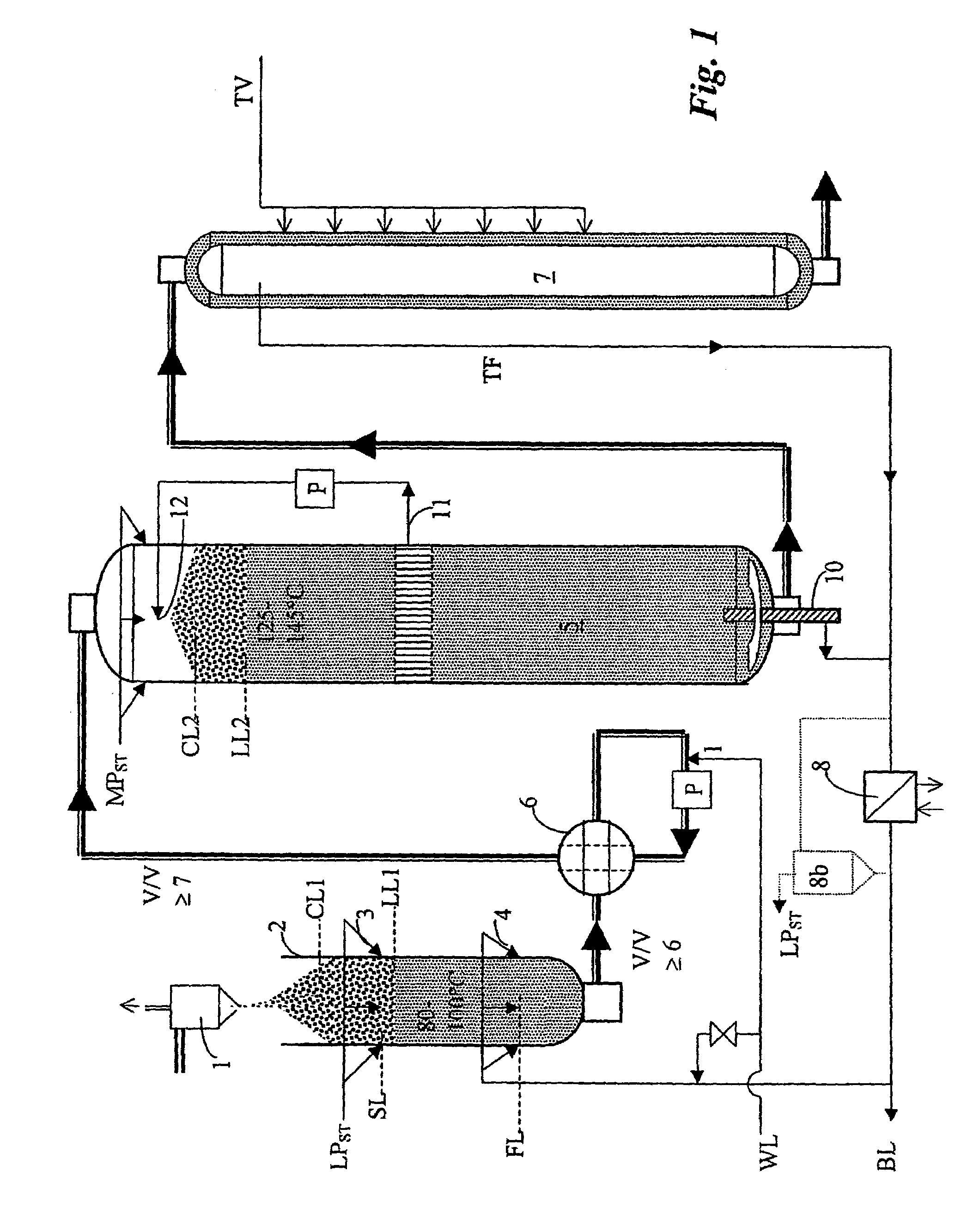Method for the continuous cooking of wood raw material for cellulose pulp
a technology of cellulose pulp and cooking method, which is applied in the field of continuous cooking of wood raw material for cellulose pulp, can solve the problems of strainer clogging, serious problems during the cooking of sawdust, and interrupting the process
- Summary
- Abstract
- Description
- Claims
- Application Information
AI Technical Summary
Benefits of technology
Problems solved by technology
Method used
Image
Examples
Embodiment Construction
[0019]FIG. 1 shows a process according to the invention in which wood raw material in the form of sawdust is continuously cooked for the production of cellulose pulp.
[0020]It is appropriate that the sawdust is continuously fed to a cyclone by blowing, where air is separated upwards and the sawdust downwards to the top of a steaming vessel 2 at atmospheric pressure, preferably a steaming vessel that is open and that lacks sluices for the input of sawdust.
[0021]Steaming / heating of the sawdust with steam LPST subsequently takes place in the steaming vessel 2. It is appropriate that the steam is constituted by low-pressure steam at 4-6 bar pressure above atmospheric, which is freely available at the pulp mill, and it is appropriate that the steam is supplied to the steaming vessel through injection of steam to the sawdust through nozzles 3 passing through the wall of the steaming vessel at an injection level SL that lies above the level LL1 of the cooking fluid while being below the lev...
PUM
| Property | Measurement | Unit |
|---|---|---|
| temperature | aaaaa | aaaaa |
| temperature | aaaaa | aaaaa |
| temperature | aaaaa | aaaaa |
Abstract
Description
Claims
Application Information
 Login to View More
Login to View More - R&D
- Intellectual Property
- Life Sciences
- Materials
- Tech Scout
- Unparalleled Data Quality
- Higher Quality Content
- 60% Fewer Hallucinations
Browse by: Latest US Patents, China's latest patents, Technical Efficacy Thesaurus, Application Domain, Technology Topic, Popular Technical Reports.
© 2025 PatSnap. All rights reserved.Legal|Privacy policy|Modern Slavery Act Transparency Statement|Sitemap|About US| Contact US: help@patsnap.com



